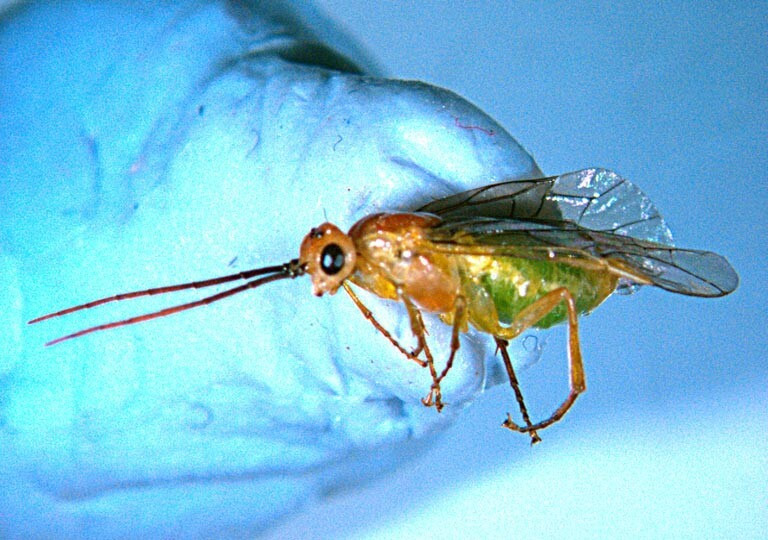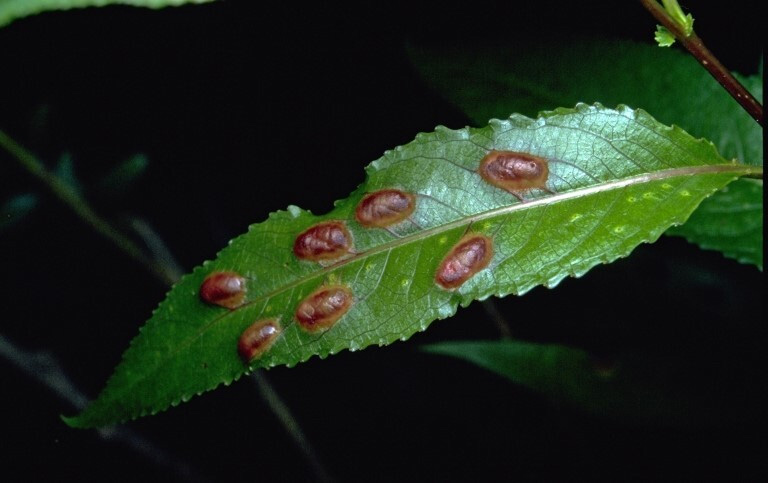Willow Redgall Sawfly (Pontania proxima)

Figure 1. Sawfly adult. Photo by DAFF Archive, Bugwood. Larger image (165KB).

Figure 2. Sawfly damage on leaf. Photo by P. Kapitola, Bugwood. Larger image (78KB).
Host
Willow trees
Damage and Symptoms
The sawflies produce bean-shaped swellings on the leaves.
Life Cycle
The adults emerge in the spring and lay eggs on the leaves. The larvae, which resemble green caterpillars, will feed and induce gall formation. The larvae then drop to the ground to spin a cocoon, and adults emerge within several days. There can be up to two generations per year.
Management
This is primarily a cosmetic issue and is not known to significantly affect the health of the tree. Rake up leaves and dispose of them off site at the end of the season. Natural enemies come in later in the season to help control the sawflies.
Further Information
To learn more about the topics discussed on this page, contact the Schutter Diagnostic Lab. If you suspect an infestation on your property, contact your local extension agent, the Schutter Diagnostic Lab at Montana State University, or the Montana Department of Agriculture.
This fact sheet is also available as a printable PDF (294KB).
Disclaimer: These recommendations are provided only as a guide. It is always the pesticide applicator’s responsibility, by law, to read and follow all current label directions for the specific pesticide being used. The authors and Montana State University assume no liability resulting from the use of these recommendations. The Montana State University Extension Service is an ADA/ EO/AA/Veteran’s Preference Employer and Provider of Educational Outreach.
